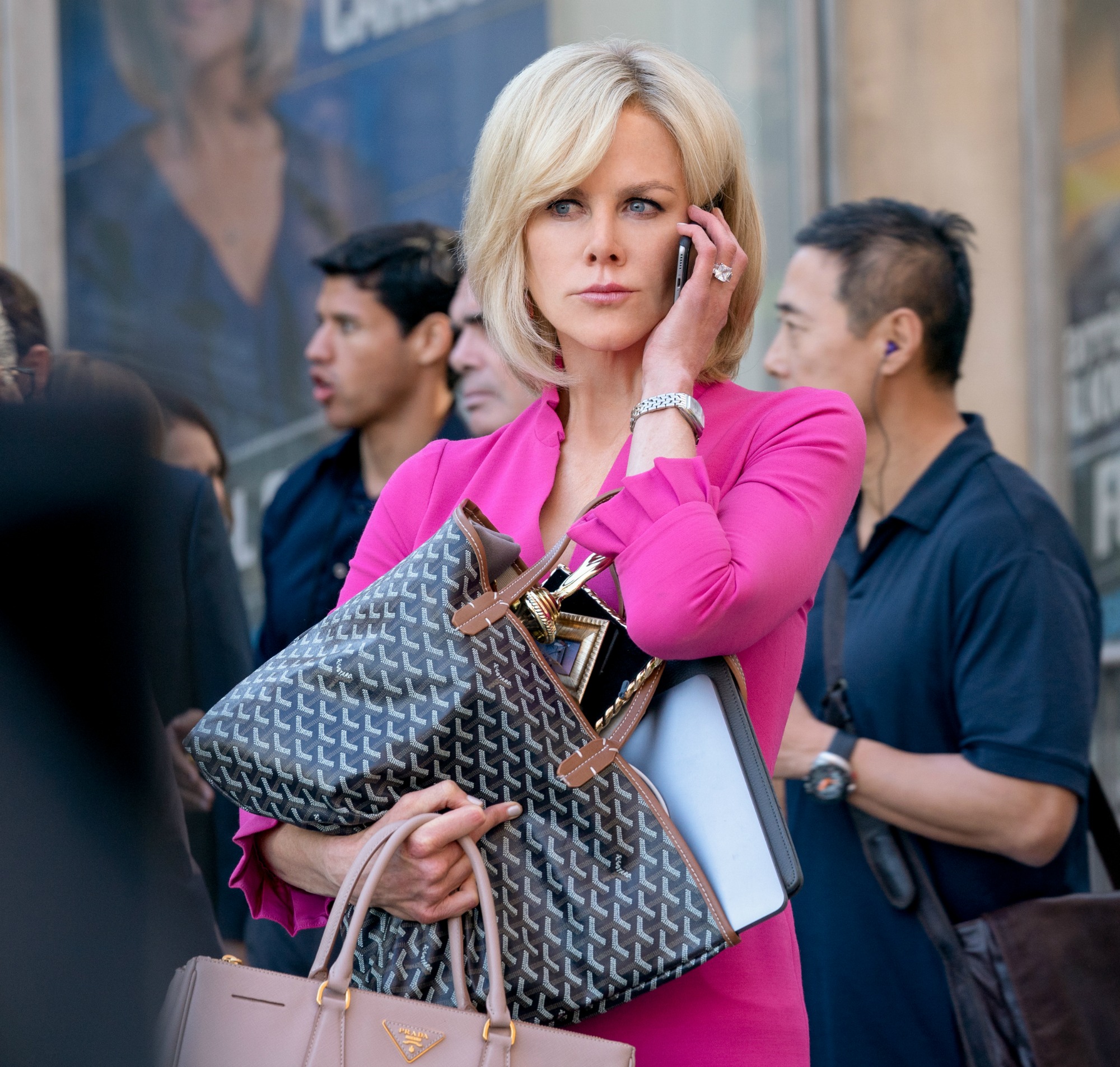“Bombshell” is a knockout, at least in terms of star power and impressive re-creations of real contemporary TV news celebrities by real contemporary actors.
You’ll think you’re watching Megyn Kelly for the first few minutes until you realize that must be Charlize Theron, who was nominated for an Oscar for the performance.
Walking around the Fox News Channel newsroom you’ll swear you just saw Geraldo Rivera and wonder if Bill O’Reilly is doing a cameo as himself.

A 97-minute bonus feature on the March 10 Blu-ray release of “Bombshell” (Lionsgate, $39.99 for combo pack with digital disc) delivers fascinating insight into the process that Theron, also a producer of the film from her company, went through to not only get Kelly’s look, but her body movements and voice pattern and intonation.
The bonus feature, consisting of seven topic segments under the umbrella title of “No Easy Truths: The Making of Bombshell,” is nearly as enlightening as the film itself, the latter of which depicts the culture of Fox News Channel under creator Roger Ailes just before and during the time he and O’Reilly were fired due to sexual harassment claims against both men.
The overweight and walker-dependant Ailes is played well by John Lithgow. While his height and distinctive appearance may not lend itself to quite as close of a physical resemblance to Ailes as other actors to their characters, it comes remarkably close due to the Oscar-nominated Make-up and hairstyling by Kazu Hiro, Anne Morgan, and Vivian Baker, who describe their process at length in the “Layer by Layer: Makeup, Hair & Clothing” section of the bonus feature. Hiro notes how he even had to give Theron pieces to wear in her nose to make her very small nostrils look wider like Kelly’s, who was at her peak popularity at Fox News at this time but was just starting to cause a storm of controversy and backlash from Ailes over her attack of then-candidate Donald Trump’s treatment of women during a key debate.

Director Jay Roach, whom the entire cast and crew shower with praise in the making-of documentary for his collegial demeanor, opted not to saddle Nicole Kidman with quite as much prosthetics as Theron for Kidman’s portrayal of fading Fox News anchor/star Gretchen Carlson, who is the primary and most high-profile instigator of the harassment challenges against Ailes, though Kidman is given padding to make her look less skinny and have a much fuller bust.

Margot Robbie, Oscar-nominated for Best Supporting Actress for her performance, is the least physically altered as the third female lead, a fictional character who is a composite of several women at Fox News. Robbie’s character is a conservative evangelical and former Florida weather who is also a closet lesbian (with a cubicle mate played by Kate McKinnon). She is working for Carlson initially but aspires to be an on-camera anchor, which leads her to calls from Ailes to come perform for him in his office – twirl, hike her dress uncomfortably high, and eventually perform oral sex, the latter of which is not shown but only mentioned verbally later.

As noted in the final segment of the documentary, “Catalyst for Change: Parting Thoughts,” it was clearly the intention and hope of all the people involved, including previous Oscar-winner Charles Randolph, that this movie would be seen by as many people as possible and be empowering to women to stand up for themselves, and to enlighten men to be aware of how their words and actions are received by women. In perhaps the most effective scene of the movie, which director Roach also notes in the bonus feature that he is most pleased with, a young real-life Fox female reporter Rudi Bakhtiar (Nazanin Boniadi) takes a meeting with the new Fox News bureau chief in Washington D.C. during which she gets initially excited when he says he is offering her a coveted promotion to come work with him there. As the conversation evolves we hear her thoughts verbalized in voice-over as it quickly becomes clear that he is only offering the job if she takes him to her hotel room. Her thoughts of disgust and indignation are heard as she tries to manage her visible reaction through careful choice of words and body language in response, so as not to jeopardize her career in the process of refusing his overture.
Unfortunately, this is one of the few scenes of real impact in the movie, which seems too preoccupied with depicting every well-known Fox News personality — it is said in the featurette that there are literally 100 different characters in the movie — rather than providing the viewer with any depth about the background stories of any of the characters, or their life outside the office aside from one or two very brief scenes for each of the main three women. As a result, we never emotionally connect with any of them, and the movie did not appeal to wide audiences, didn’t last long and was not a big success in theaters.
A 2018 theatrical documentary called Divide and Conquer: The Story of Roger Ailes, was actually more informative and more compelling, as was last year’s Showtime series “The Loudest Voice,” which was focused more specifically on the story of Ailes, as portrayed by Russell Crowe. These also serve as a good shows to watch in advance of Bombshell, to provide the background to what is covered superficially here, but with decent dramatization of what “Bombshell” does portray.
The parade of recognizable actors who each do well in brief roles includes Connie Britton, as Ailes’ unfailingly loyal wife; Holland Taylor as Ailes’ unfailing loyal secretary; Allison Janney as Ailes’ conflicted attorney Susan Estrich; and Malcolm McDowell as the owner of Fox News, Rupert Murdoch. McDowell, one of the dozens of people interviewed for the Blu-ray bonus feature, rightly notes the line he offers when he is firing Ailes as one he quite enjoyed, and one of the best in the movie. As Ailes makes a desperate last-minute argument to save his job by noting how he made all these women into celebrities and didn’t damage any of them, Murdoch responds: “There’s no audience for that side of the story.”
The movie was shot with two and three cameras filming most every scene from different angles at the same time, and using more zooming and movement than is typical. This style, detailed in the “Breaking the Fourth Wall: Visual Design” segment, will only be slightly noticeable to the average viewer, but does create a couple visually interesting moments, particularly capturing reactions and body language in the only scene where all three primary actresses are together in an elevator, standing uncomfortable with almost no dialogue at all.
Perhaps with the Blu-ray release and the movie already being available now on digital services. “Bombshell” will get the wider audience everyone involved hoped for.
— By Scott Hettrick

